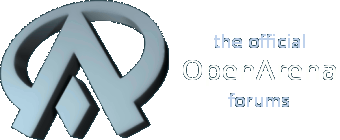Thanks for the links, which is what I was looking for. But the links provided restate my original question of what constitutes the source code of a picture. Source is readable in a text editor, while a picture looks to me to be a binary.
At least as far as images go, the source may be the picture itself, or it may be in a format that to some extent breaks down individual steps (vector graphics, layers, undo history), though this is not always possible. They are not text, but it can still be read and understood (to some extent) by a human (as opposed to
this in the case of sound -- what is this supposed to sound like?).
Whether one form of source is more appropriate for a certain project... depends on the project.
This was in my previous post -- sorry if I wasn't clear enough with the above.
I've seen a lot of software release its media under the GPL, but I'm not sure it would hold up in court at all. It seems to me that when ppl release media under the GPL they really want the "spirit" of the GPL rather than the actual license.
You can take a copyrighted or non-Free work and put it out as GPL (or CC), but this does not automatically make it Free or free to use (like models or textures from a retail game, or using clips from a song). You can also take GPL media and put it in your project, but not give credit or provide sources or modifications (like using OA's media, but not providing the SVN contents, or not saying it's from OA, or even calling it your own work).
In some cases, it may be meant for the media or created work to be freely used and not owned by anyone (instead of truly free), even though some of its components may not actually fall under that category (or could be grey areas themselves).
This is also something like being just open-source but not free, and the other way around.
This has been a problem with some projects. I don't know any examples in court, but there are some examples in the Debian repos or any good
free media or
game dev site or forum.
It also seems that freedom 0 and freedom 1 can't apply to media as well. IDK this has just been something that I can't wrap my head around.
Even if you do have source, knowledge and experience in art and image production, editing, etc. is necessary in most cases. If it's in a form that doesn't necessarily have source per se (such as (I'm making this up) images in an icon pack or theme, where the intent is that you can use them freely), you'd still need to know what you're doing in order to figure it out.
Someone has to know about coding, the conventions of coding, and how to code... then will they understand what to do with a program's source code (or composition or audio engineering in the case of music and sound). (OTOH, maybe someone wants to steal a website design, but instead of ripping out HTML and images, or getting a copy of the software, they use a "website downloader" they found in their MSN results.)

